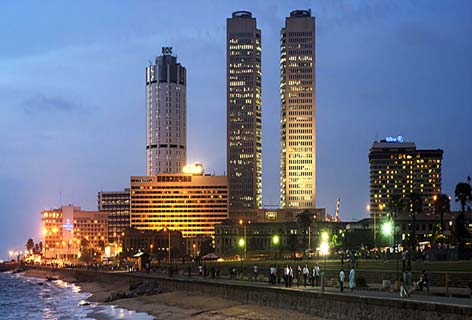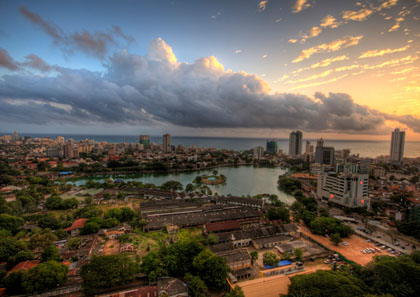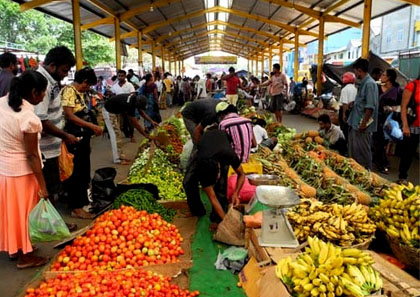Heritage Sites
Situated in the North-Central part of the island, Anuradhapura was the first capital of Sri Lanka, established by King Pandukabhaya and thrived as a Royal Kingdom for 1300 years. An invasion in 993 saw the end of the Anuradhapura reign, but to this day, the city remains as one of the finest heritage sites in Sri Lanka. Scattered with magnificent temples, reservoirs, stupas and historical monuments to explore and admire, Anuradhapura is home to the sacred Sri Maha Bodhiya Bo Tree which is believed to be a sapling of the Bo Tree that Lord Buddha attained enlightenment under.
In this impressive city you will also find largest ‘Stupa’ in Sri Lanka, the remarkable Jetavanaramaya, which stands at 120m tall, Ruwanweliseya is Anuradhapura’s best-preserved and most beautiful Stupa and is well worth a visit. Be sure to stop by the ‘Kuttam Pokuna’ twin ponds and marvel at the advanced landscape architecture of ancient times.
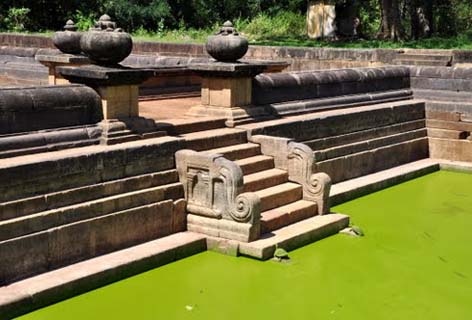
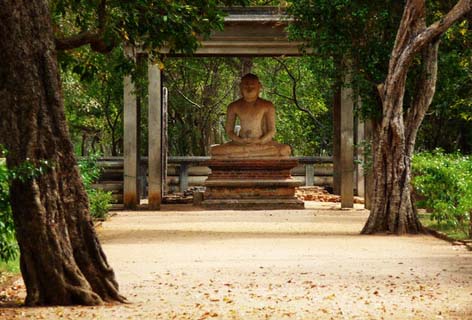
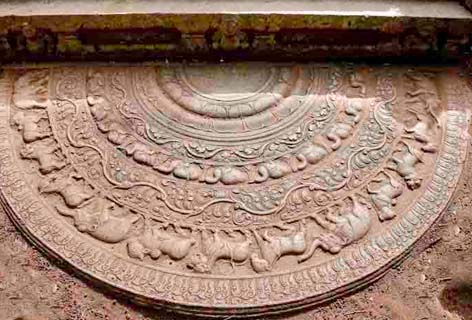
Polonnaruwa was declared the island’s second capital by King Vijayabahu the 1st, after he successfully defeated the Chola invaders and reunited the country. Apart from the Brahmanic monuments built by the Cholas, Polonnaruwa contains fabulous ruins of the beautiful garden city created by kind Parakramabahu in the 12th Century including the Parakrama Samudra, which is the largest ancient man-made rainwater reservoirs in Sri Lanka. The awe-inspring ‘Vatadage’ and the stunning Lankatilake Shrine with its towering 17m walls and images and statues of Lord Buddha are among the masterful creations of the Polonnaruwa era.
Remains of the Royal Palaces as well as a variety of archeological museums and the Tivanka Pilimage with wall paintings dating back to the 13th Century, also exist in this city of treasures galore.
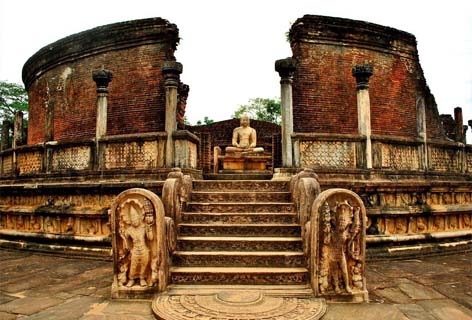
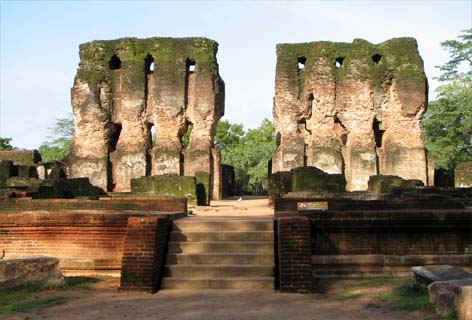
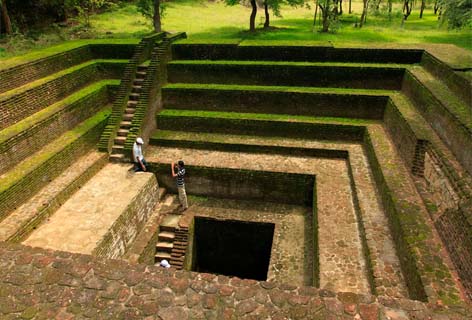
The city of Sigiriya is one of the best preserved ancient cities in Asia and The Sigiriya Rock Fortress, is no doubt, one of the world’s most astounding spectacles. This historic miracle was built by King Kasyapa, who fled to Sigiriya after seizing the throne from his father. Following this debacle, Kasyapa constructed a fortified kingdom in hopes of gaining protection from his brother, the rightful heir to the throne.
Sigiriya Rock Fortress consists of beautifully landscaped water gardens at the base with narrow steps leading up to the impressive remains of the Lions Gate, wall of frescoes and gallery of painted murals. As you climb higher, you are able to wander among the remains of the great ‘Palace in the Sky’ which lies on the flat surface of the massive rock structure.
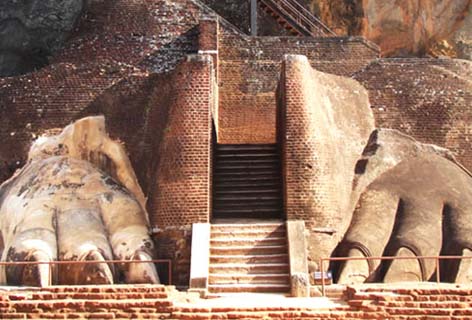
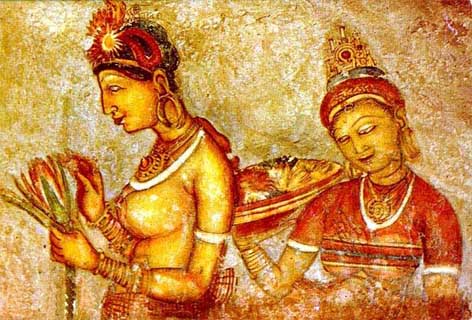
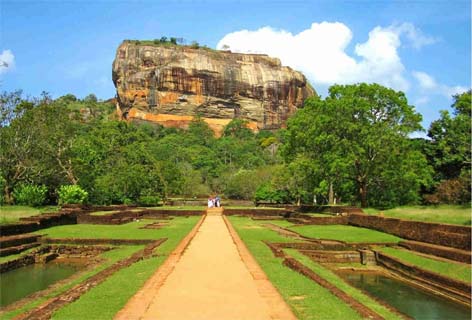
The characteristic seaside town of Galle remains a prime example for a truly fortified city constructed by Europeans in South-East Asia. Galle was founded by the Portuguese in the 16th Century and developed immensely between the 16th and 18th Centuries by the Dutch. The large ramparts and bastians that enclose Galle Fort exhibit Dutch-Colonial structures peppered with Sri Lankan influences and the quaint villas and churches display an eclectic mix of European and Asian architecture.
Most of the villas and houses on the streets of Galle have now been converted into boutique hotels, holiday homes and charming restaurants, making the town a relaxing and peaceful seaside getaway. Galle is also home to the Galle Cricket Stadium, which is a popular venue of choice for international Test cricket matches.
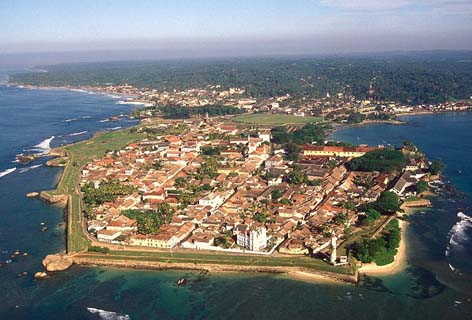
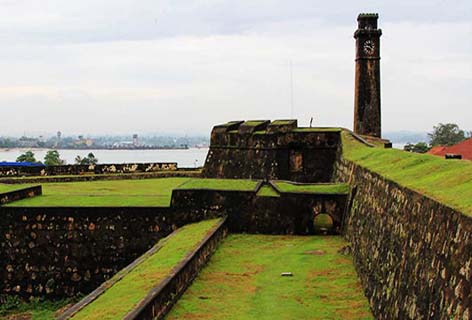
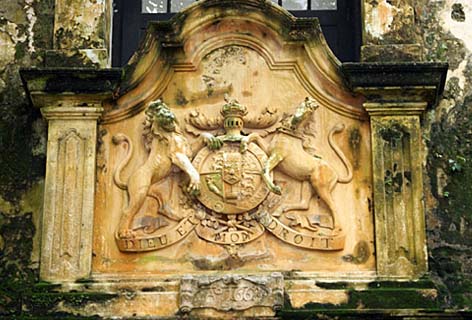
Kandy was the last capital city reigned by the Sinhalese Kings and is home to the temple that safeguards the Sacred Tooth of Lord Buddha. To this day, Kandy remains the religious capital of Buddhism in Sri Lanka. The Sacred Tooth Relic is paraded around the city annually during a grand religious procession known as the Kandy Esala Perahera. The Esala Perahera is fascinating whirlwind of vibrant cultural and fire dancers, energetic drummers, and elephants clad in glittering attire. A magnificent and elegant event, this magical parade is not be missed.
Apart from the grand Temple of the Tooth Relic, the monumental sites of Kandy include the lade created by King Sri Wickrama Rajasinghe in the 18th Century, the Old Royal Palace Compound and the Hindu Shrines adjacent to the Temple of the Tooth.
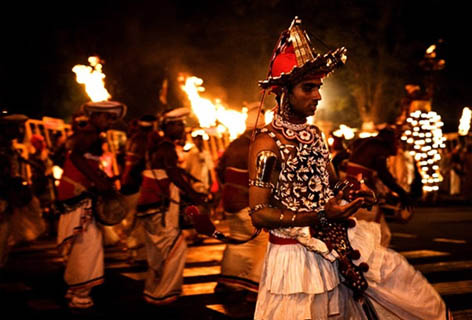
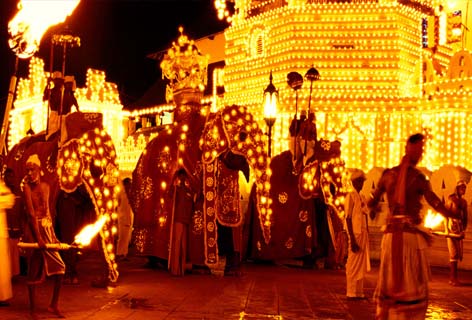
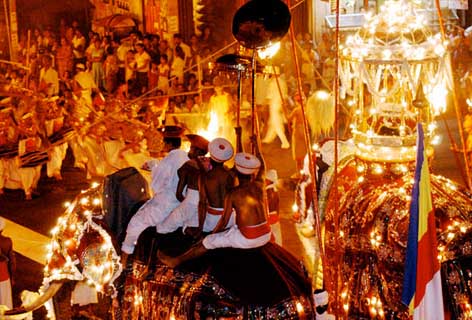
The serene town of Dambulla is home to the magnificent Golden Temple of Dambulla, which comprises of 5 spacious caves that have been converted into shrine rooms with a beautiful white facade and entrance. As you venture into the caves you will step into a sanctuary of the most stunning example of Sri Lankan religious art. Delicate motifs and religious paintings engulf the ceilings and walls, covering an area of 2100 square meters and 157 exquisite statues of Lord Buddha, Bodhisattvas and Hindu, deities adorn this tranquil and sacred rock temple.
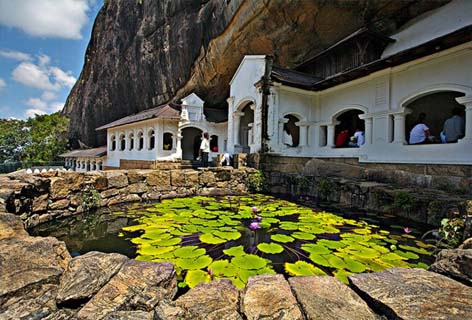
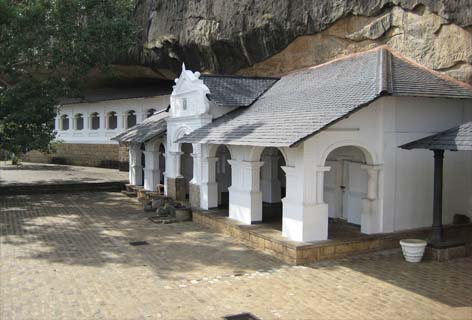
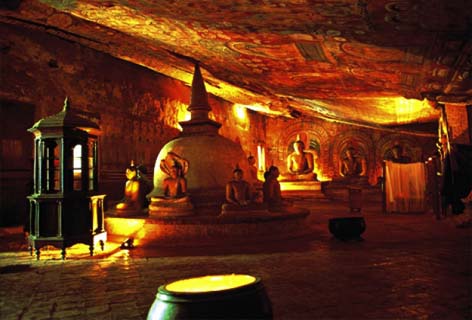
The Sinharaja Forest Reserve is a unique tropical lowland rainforest and Eco-tourism destination situated in South-West Sri Lanka. Nowhere else in Sri Lanka will you find such phenomenal diversity of species and plant life over 95% of the endemic birds of Sri Lanka can be found in this green haven, which makes it the ideal location for bird watching. Sinharaja houses more than 50% of endemic mammals and butterflies and more than 66% of endemic trees and vines. It is also home to a fascinating variety of insects, reptiles and amphibians and makes for an unforgettable experience will nature at its finest.
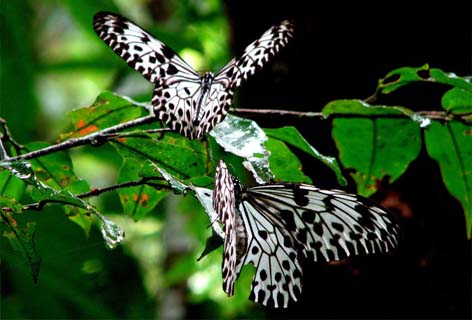
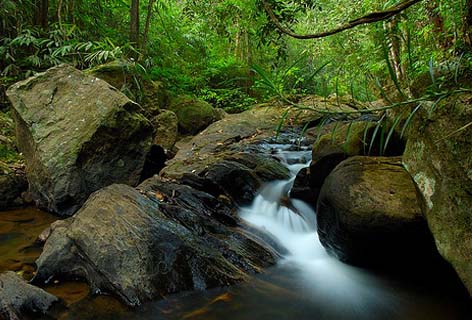
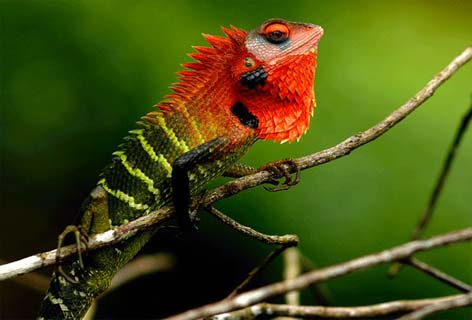
The Central Highlands of Sri Lanka are made up of 3 picturesque mountain locations, namely The Peak Wilderness Protected Area, Horton Plains National Park and Knuckles Conservation Forest. The 3 areas are unique forests, some 2500m above sea level, brimming with an abundance of greenery and wildlife. The incredible view from the 1000m Worlds End drop at Horton Plains National Park will take your breath away and the myriad of unique species found on the misty hills of the Knuckles mountain range will fascinate you to no end.
Climbing Adams Peak, which lies in the heart of The Peak Wilderness Protected Area I an ancient pilgrimage followed by devotees from all religions journey up the mountain with the goal of reaching the peak before down and you will be rewarded with a spectacular view of the most glorious sunrise when you finally reach the top.
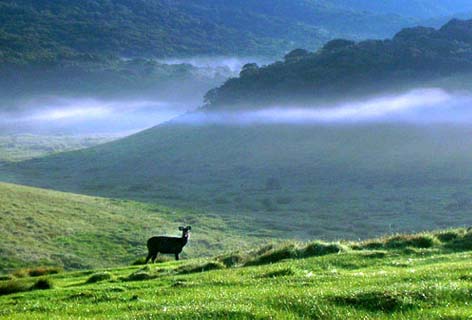
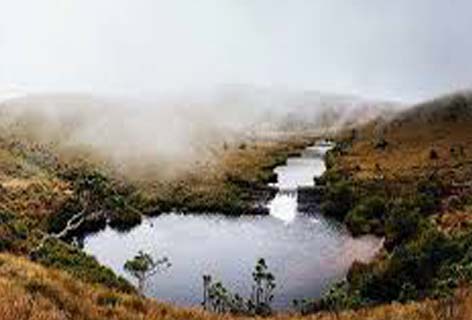
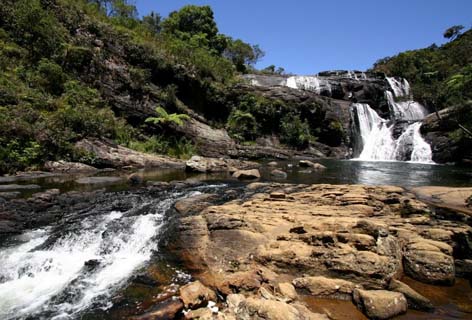
National Parks
Is famous for its elephant population, seen in small and large herds. Spotted deer, Sambhur, Barking deer, Monkey, Wild Buffalo, Wild Boer, Sloth Bear and innumerable varieties of birds, endemic and migratory. Peacock is the most famous of the birds at Yala. The mating dance of the male with its colorful plumes fully spread is a photographer’s delight.
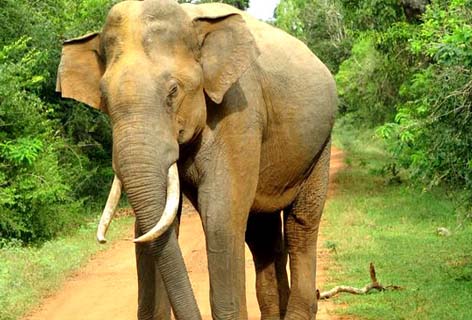
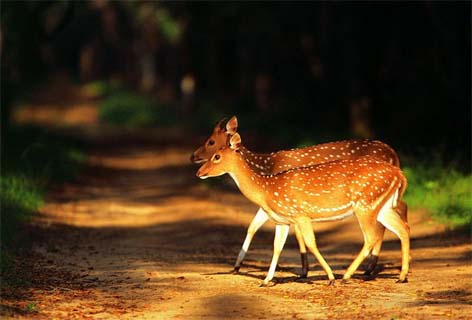
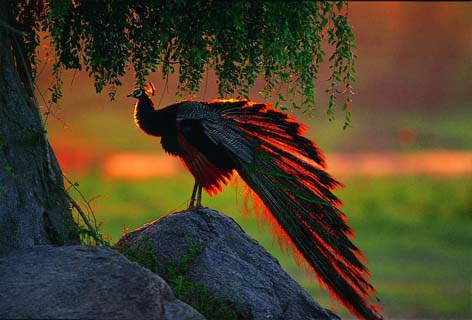
Lying within the ancient kingdom of Ruhuna there are also a large number of archaeological sites. Notably Sithulpawwa, a rocky site believed to have been a monastery which housed more than 10,000 people. According to over 60 inscriptions found at the site it is one of the greatest monasteries of the 2 c. B.C. found in Sri Lanka.
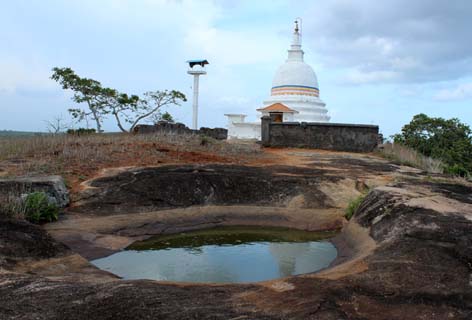
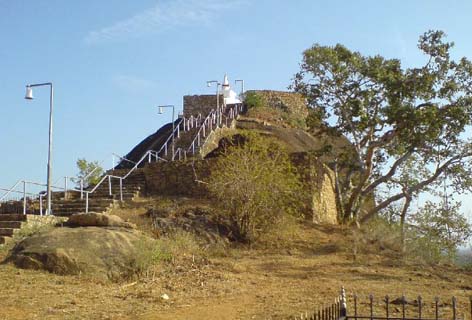
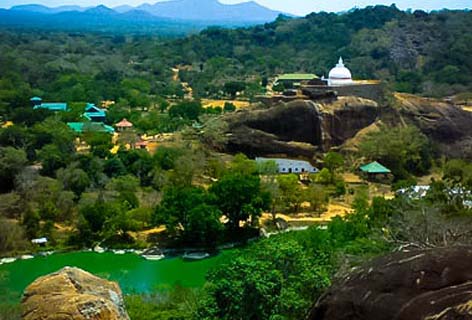
Is a well-known bird sanctuary where a multitude of birds breed and roost. One of the most significant features of the park is the ‘Kumana Villu’ – a 200 hectare natural swamp lake. It is at this mangrove swamp that many water birds nest in May and June. Regular sightings include pelicans, painted storks, spoonbills, white ibis, herons, egrets and little cormorants. The very rare black-necked stork has also been spotted at the swamp. Besides the prolific bird life, Kumana is also home to some of the mammals found in the larger YALA (West) park. For bird watching enthusiasts, this park is an ‘absolute must’.
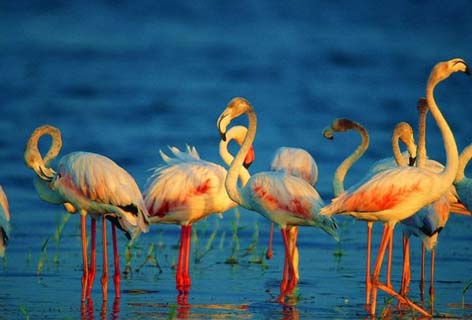
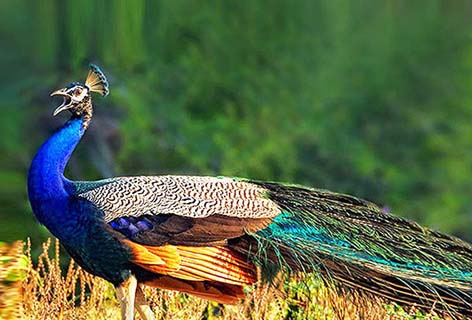
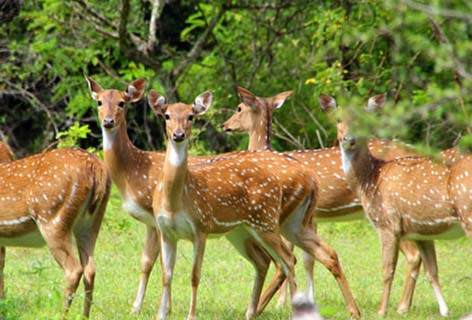
Situated in the North-Central Province closer to the ancient cities especially Polonnaruwa, at Wasgomuwa wild elephants could be easily sighted. It is also rich in other large mammals.
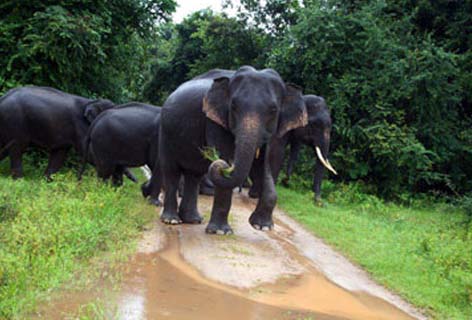
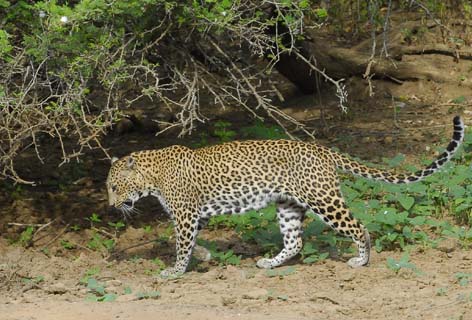
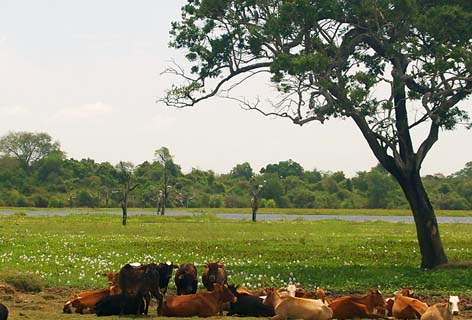
Maduru Oya lies close to Sigiriya. Established to protect the catchment areas of the main reservoirs under the Mahaveli Schema and to provide a safe haven for the already depleting mammals. This area is being recognized as the most valuable conservation for elephants, and endemic birds of Sri Lanka. Wild animals that roam the park comprises elephants, bears, leopards, sambhur, water buffalo, purple monkey, variety of deers, reptiles etc…. Aquatic birds thrive… sea eagle, great cormorant, little cormorant, painted stork, Sri Lankan jungle fowl, tailor-bird, white ramped shama, black hooded oriole, red faced malkoha etc……
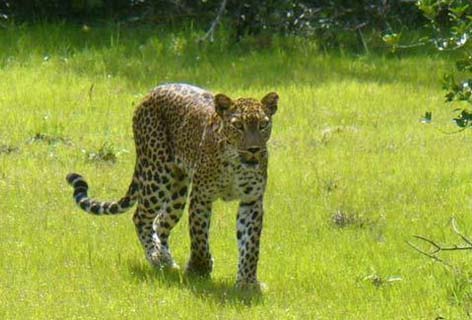
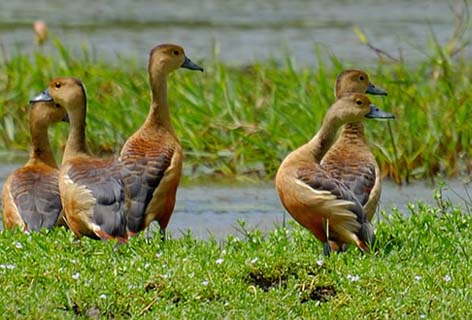
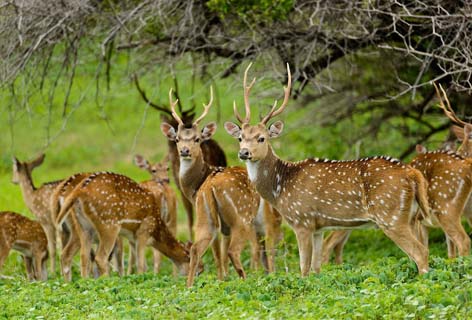
Circling the beautiful Minneriya Tank (3c A.D.), the green surroundings are strikingly different to the arid landscape. Being part of the elephant corridor which joins up with Kaudulla and Wasgomuwa you are sure to sight elephants, During the months of August/ September one of the awesome wildlife spectacles ‘The Gathering’, ranked sixth in the Lonely Planet’s ten greatest wildlife spectacles take place. Over 300 elephants converge to enjoy the tank with the receding water level to play and make merry. A variety of bird life could be spotted including some endemic to Sri Lanka.
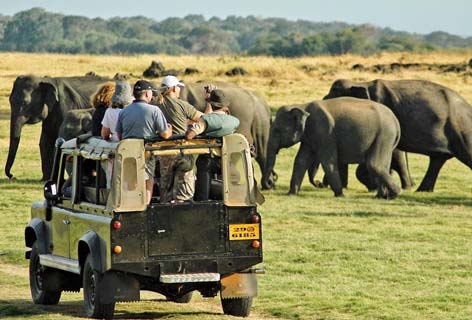
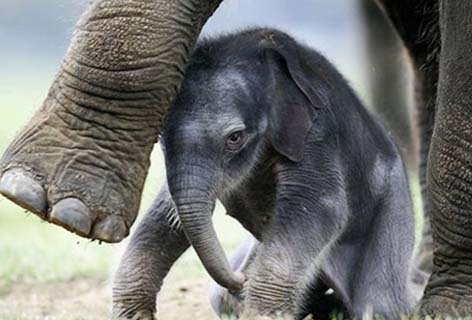
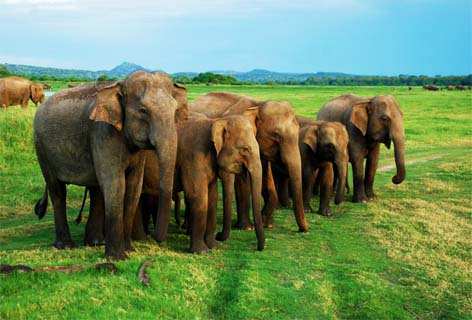
Lies in the southeast of Sri Lanka beyond the Island’s central hills. Established in 1954 to protect main catchment area the vast Senanayaka Samudra, it is the only park which allows visitors to enjoy its beauty and wild life by boat safari as well as by jeep. Covering an expanse of approximately 26,000 hectares, Gal Oya National Park is home to 32 species of mammals including herds of Asian elephants, leopards, water buffalo, sambhur, deer and the elusive sloth bear. Apart from elephant lovers, the boat safari has many surprises awaiting the bird lovers too. The ‘Kurulu Dupatha’ or the ‘Bird Island’ and some of these islands are teeming with birds. Best time to visit Gal Oya National Park is from March to July. During this period, on a boat safaris you behold the spectacle of herds of wild elephants swimming from island to island within the great reservoir.
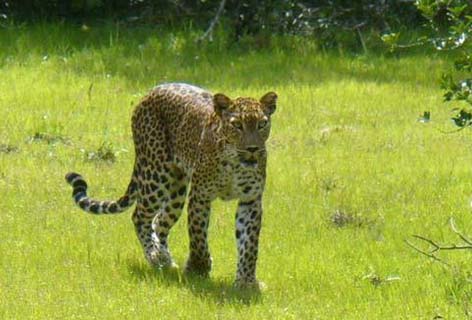
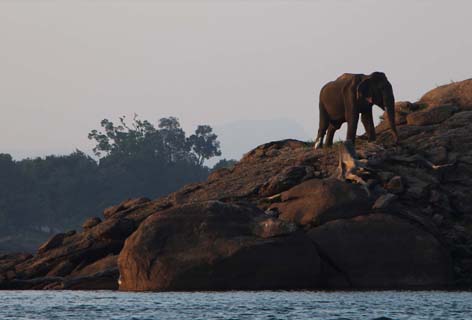
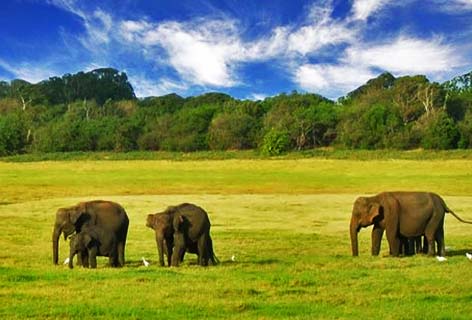
Is next in popularity to Yala, and elephants could easily be observed even in midday. In addition 39 species of mammals and 183 species of birds have been recorded.
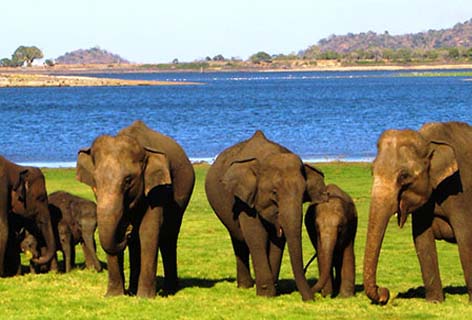
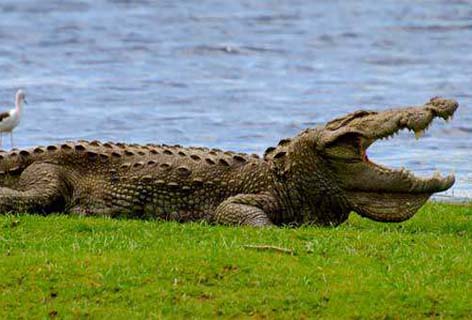
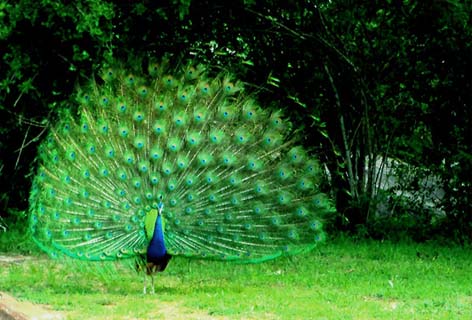
A Center for Rehabilitation and Re-integration of orphaned wild elephants has been established at Udawalawa National Park by the Department of Wildlife Conservation. Increase of the country’s population, large scale irrigation and agricultural projects have fragmented the former habitat of elephants resulting elephant mortality and decrease of population. Despite the mitigation measures to control human elephant conflict considerable numbers of elephant calves were recovered as orphans.
The DWLC pioneered a research project in 1995 at Udawalawa to rehabilitate and supplement wild elephant orphans back to wild. It has been successfully carried out with four releases the antics of these babies from a viewing platform at the Centre, The DWLC calls for public support to minimize the expense from the public by joining the foster-parent scheme and help wild elephant orphans program.
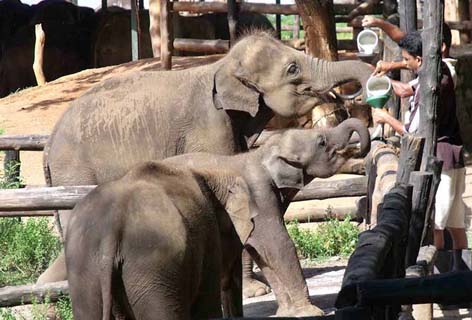
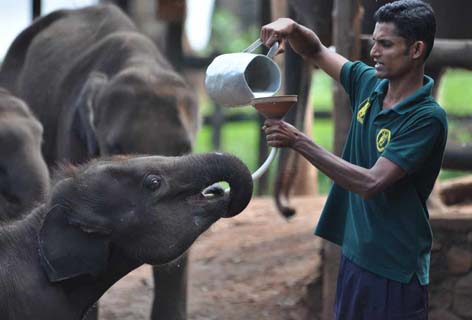
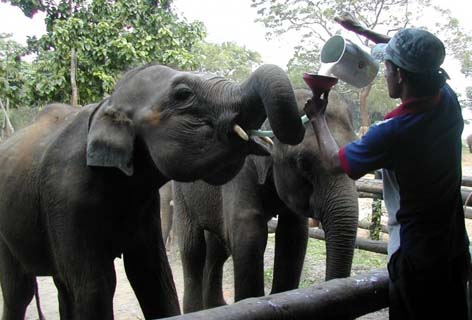
Close to Anuradhapura is unique in its topography having several inland ‘villus’ (lakes) that attract thousands of water birds. It is the domain of the elusive leopard. Bear and herds of deer and sambhur are common. The vegetarian is lush and wide changes of vegetarian can be experienced in different sections of the park.
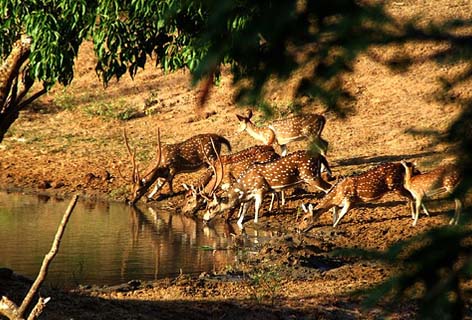
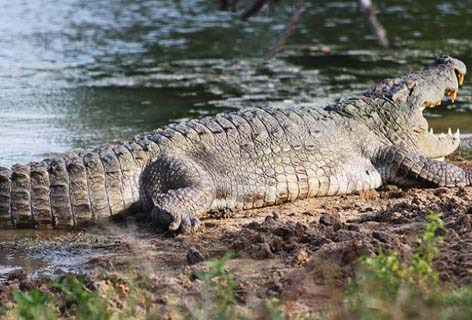
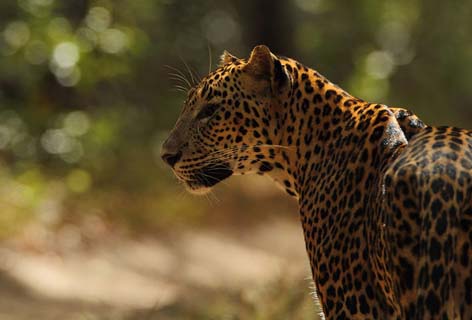
In the Deep South on the way to Yala is Sri Lanka’s first recognized Ramsar Site (i.e. a wetland of international importance). Popular with both local and migratory birds. Around 167 species have been sighted. The park is the last refuge of the Greater Flamingo in this part of the island, up to 2000 of these birds have been recorded during November/ December. The lagoons also constitute one of the most popular wintering areas of migratory shorebirds in the country.
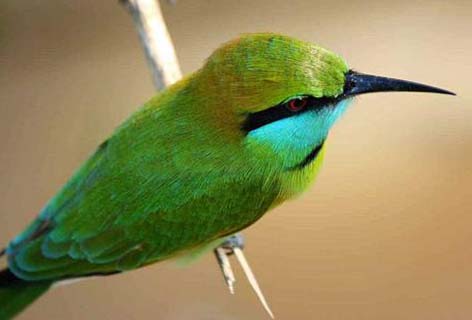
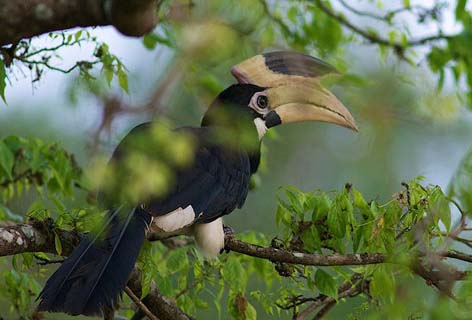
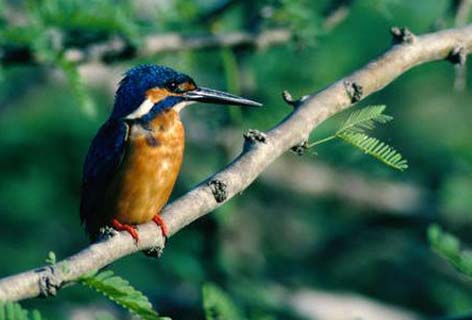
The Department of National Zoological Garden has set up an orphanage for baby elephants at Pinnawala which is about 13km from Kegalle Town. The orphanage was established to feed, nurse and house for young elephants found abandoned by their mothers. Often the young ones fall into pits and ravines in their quest for water during drought period. Other inmates at the orphanage are those displaced from their natural environs by development projects or those found diseased or wounded.
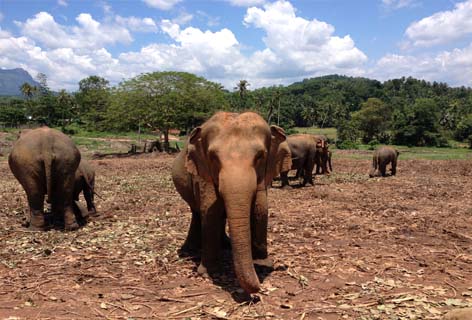
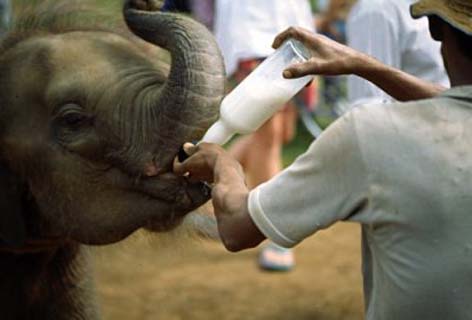
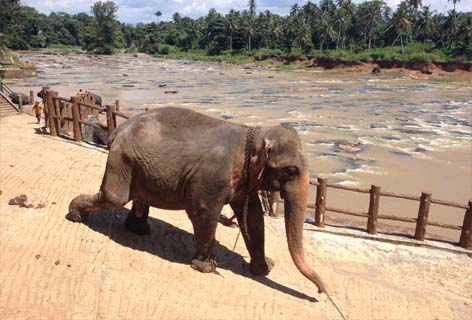
Beaches (South, West, North Coast)
Sri Lanka is a paradise of unlimited sun, sea, sand and the surf all year round. The coast often twists and curves into little nooks, bays and coves, ideal romantic hideaways. The Indian Ocean clear blue and peacock bright, at a warm 27C kisses the beaches the south west coast is at its best for sea adventures between November – April and the east coast the rest of the year.
A characteristic fishing town North of Colombo, it is a mere 6km from the International Airport. Set amid lush groves of coconut palms, it breathes the spirit of the sea. Negombo is a gourmet’s paradise with sea food in plenty. Apart from beaches and sea-food Negombo has a unique charm of its own with narrow streets, small boutiques and Catholic Churches dotting the landscape.
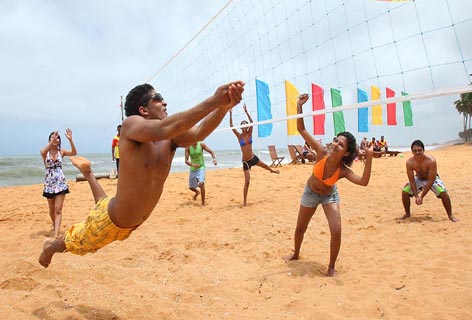
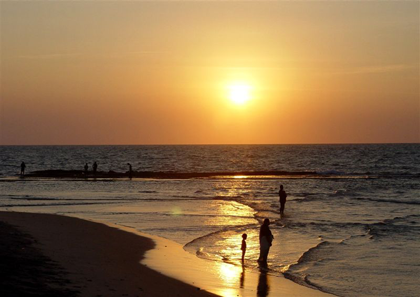
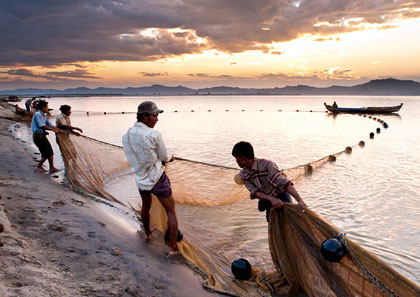
Kalpitiya in the North-West Coast is a stretch of land skirted by sea on one side and lagoon on the other and fast developing as a beach resort. Fourteen unspoiled islands basking in the sun, rimmed by the blue water of the Indian Ocean and wide sandy beaches waiting to be discovered. Presently the attraction is the Dolphin’s & Whales population which could be watched without sailing out to the deep seas.
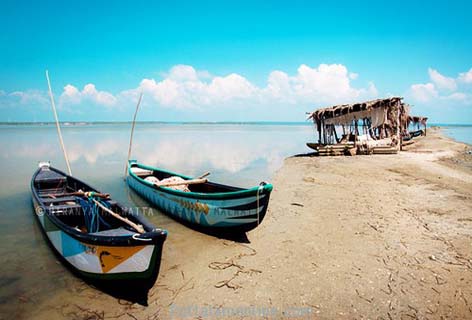
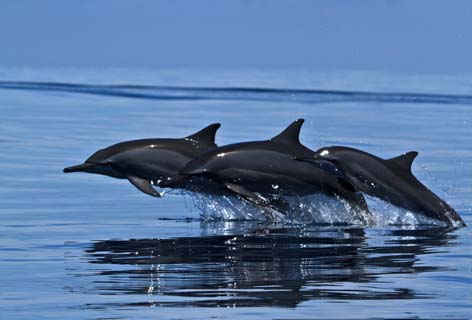
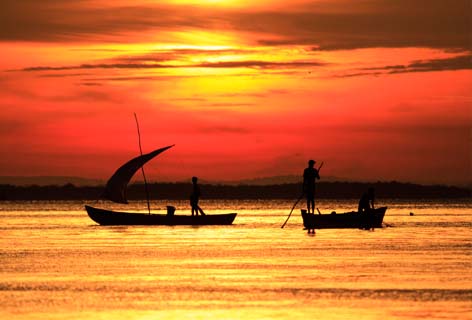
Just 12km south of Colombo, Mount Lavinia is an immediate city suburb and the beach is one of the better known even in colonial times.
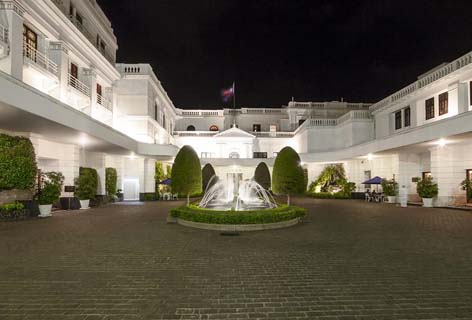
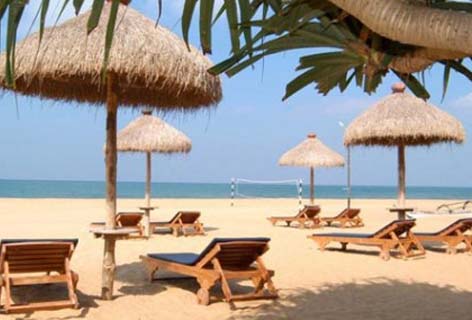
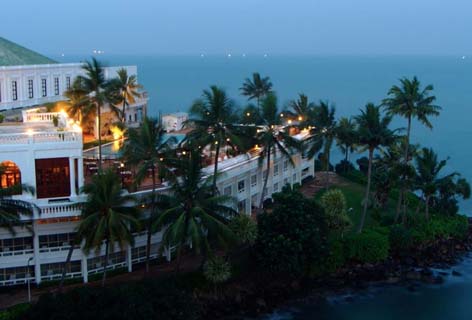
Bentota Resort Complex in a romantic rendezvous of river and sea with several hotels, railway station, post office, shopping arcade, cafeteria and an open-air-theatre showing fold and mask dancing – with clusters of palms overlooking everything. Interesting boat trips to the hamlets bordering the river and the Meethiyagoda Moonstone mines nearby. Most hotels have facilities of water sports.
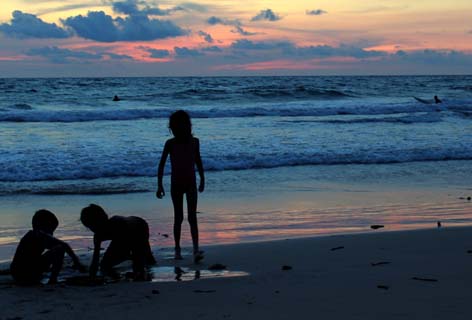
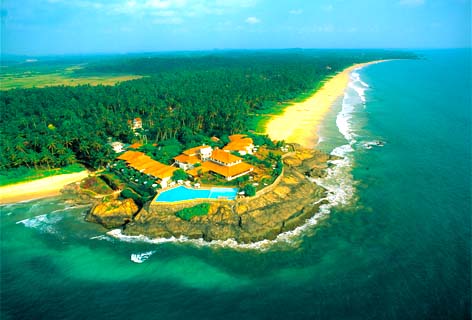
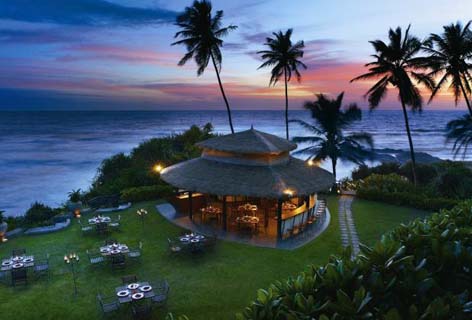
Home of the low country masked dancing (devil dancing) and mask making. An interesting mask museum and a delightful beach for sea bathing.
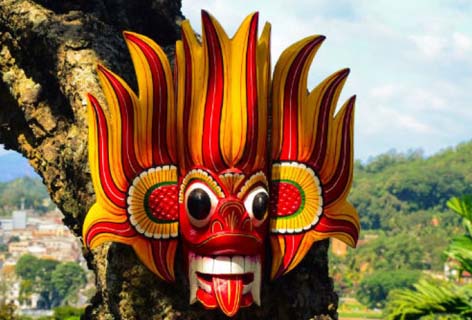
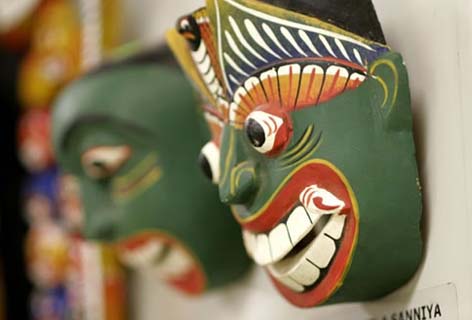
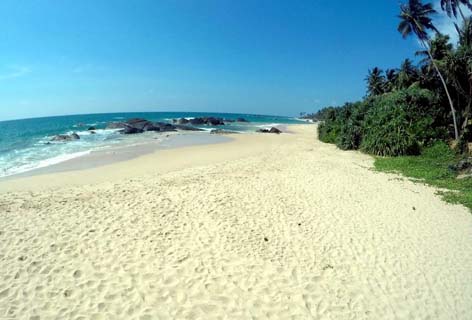
Hikkaduwa is the place for underwater delights. Site of the famed coral gardens, hire a glass-bottomed boat or goggles and flippers and explore the fantasies under your feet. Marine National Park.
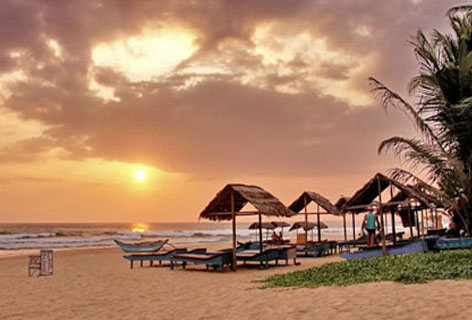
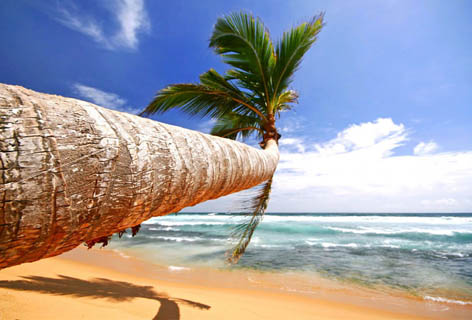
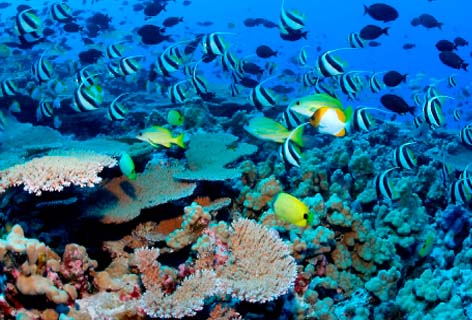
Galle is the most important Southern town with an old-world charm. Believed to be ‘Tarshish’ of the Bible, its natural harbour was a famous fort in days gone by. Famous for its Dutch Fort, lace-making, embony carving and gem publishing.



Close to Galle, is a beach resort popular with tourists as well as local travelers. It provides the beach facility Galle lacks, hotels, guesthouses and restaurants line the beach road amid lush green vegetation. A fine reef for snorkeling. Placid deep blue sea, frequented by turtles who come here to lay their eggs by night.
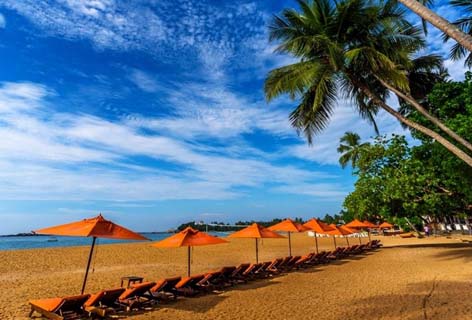
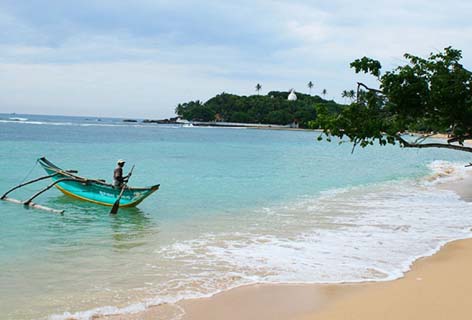
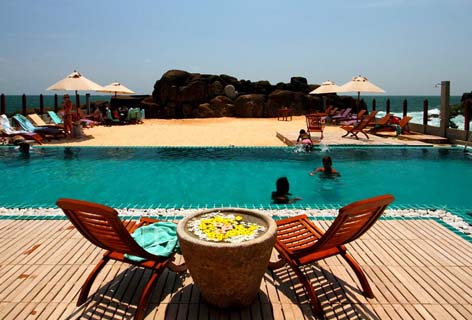
Famous for its lake which was used during the Second World War as a base for Catalina flying boats. It is also a favourite haunt of migrant birds in winter. A leisurely-out rigger boat ride will take you to small islands which dot the lake. Stilt fisherman are a familiar sight here. You may also visit the Martin Wickramasinghe Museum of Folk Art and Culture. The Purwarama Temple at Kataluwa shows a full range of styles of the Southern School of Murals dating as far back as the early 1800s.
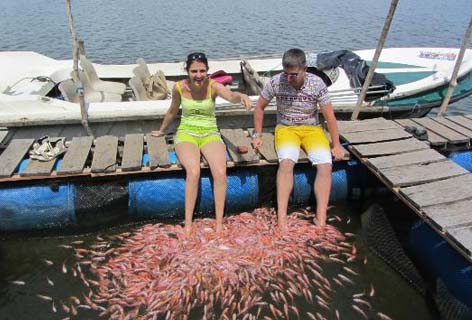
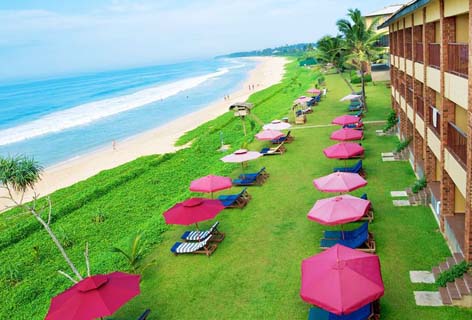
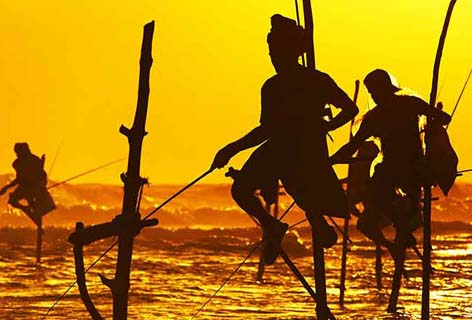
27km, from Galle with its picturesque bay, and an off shore islet where a French Count built his dream house, Weligama is where you will see the famous stilt fisherman.
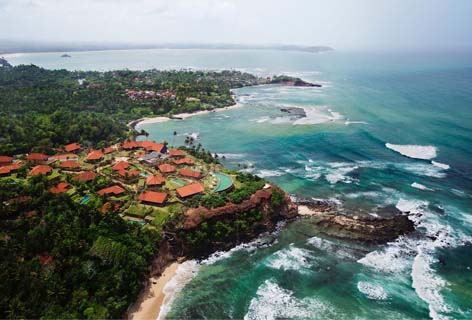
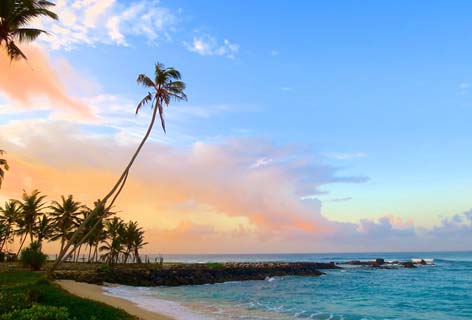
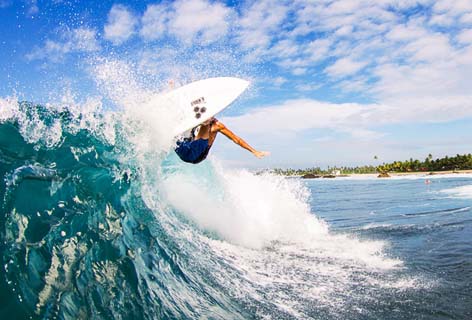
Built on the banks of the Nilwala Ganga (river), it is an ancient settlement. The Dutch Star Fort (17-18c.) still in good repair, the Weherahena Temple built underground with a colossal Buddha Statue and the Polhena Beach are its main attractions. Matara, is protected by coral reef forming a lagoon between beach and reef with the famed Coral Gardens just beyond the reef. The Lagoon is safe for bathing throughout the year, and is a veritable marine wonderland. The sea off Mirissa harbor in Matara is among the best places for whale watching.
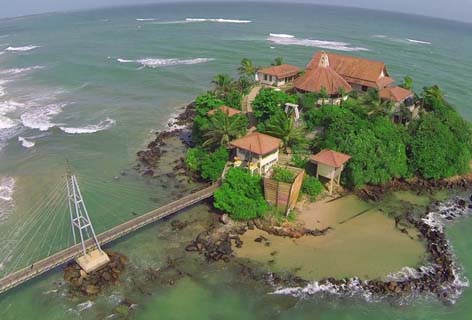
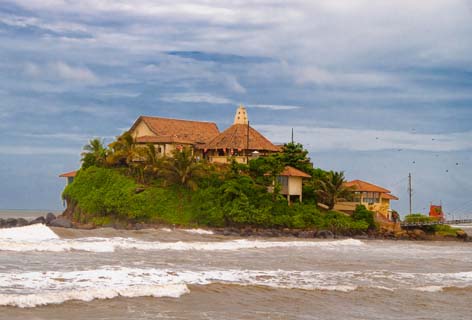
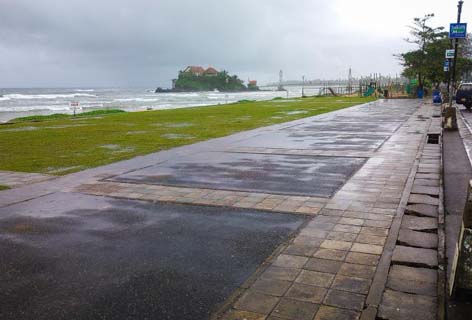
The southernmost tip of the island. A colourful festival is held during August/ September in honor of God Vishnu featuring elephants, low country and Kandyan dancing. Octagonal in shape Sri Lanka’s tallest lighthour (50m) dating to the late 19th c. is found here.
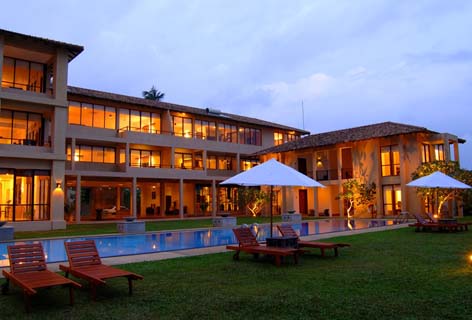
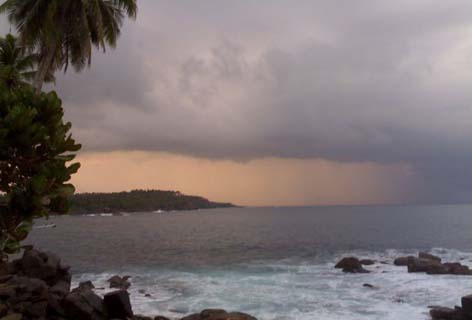

A burgeoning town on the South coast flourishing on the thriving fishing industry and the development activities of the rich hinterland. Just 8km from Dickwella at Mawella along the coast you come across a blow-hole (Humming Spout) perhaps the second largest of the six blow-holes in the world. You could see the water gushing about 18m over the rocks. If you are adventurous you may join a fisherman and venture closer to the spot by sea – an exhilarating experience indeed.
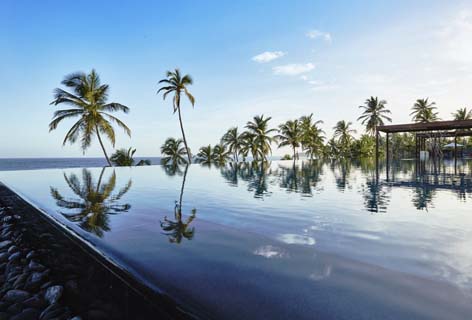
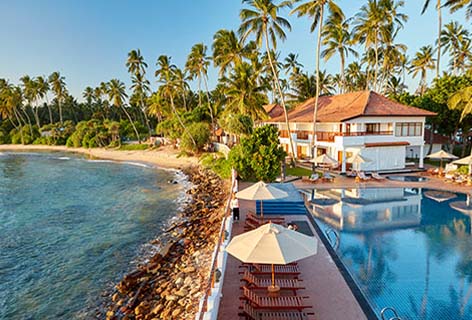
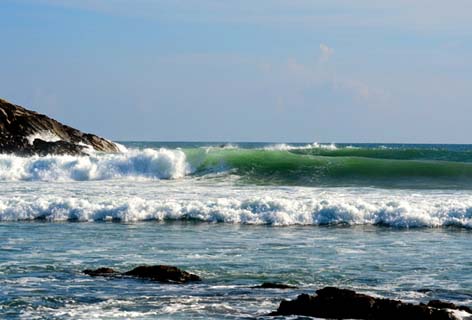
Most picturesquely located, Tangalle’s four mile wide bay is a paradise for swimmers and divers. Most of the hotels hug the bay. A 211m rock similar to Sigiriya, Mulkirigala is 21km from Tangalle. Instead of a palace in ruin there is a dagoba on top of this rock. The beach at Rekawa village just 10km away is an important sea turtle nesting site. Excursion to Kalametiya bird sanctuary.
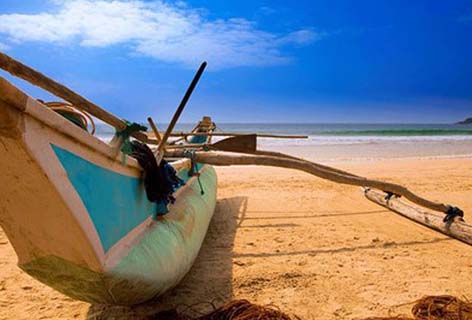
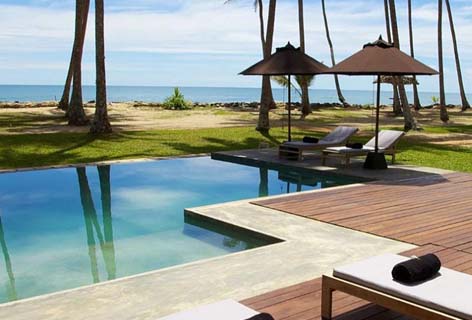
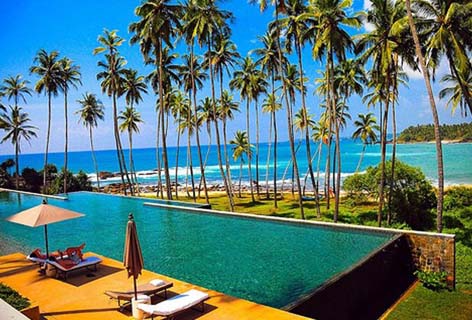
The large well-sheltered fishing port is the center of Sri Lanka’s salt industry. Dry and arid, the blue palm fringed beaches give way to scrub covered savanah only the distant hills of Kataragama breaking the monotony. Incidentally a fast growing township with a new harbor.
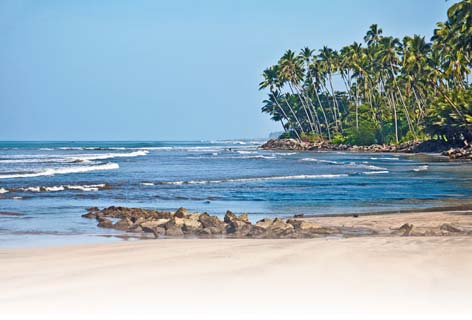
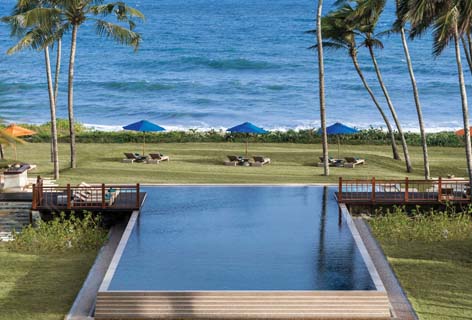
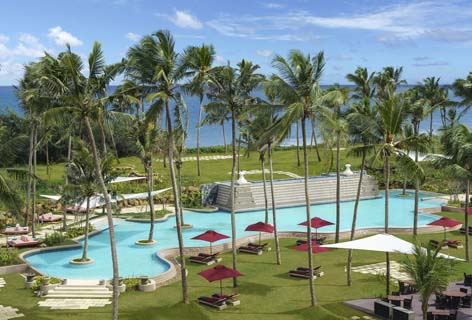
Beach (East Coast)
The port town of Trincomalee, Nilaveli, Kalkudah, Pasikudah and Arugambay are its more famous tourist centres. The east-coast is ideal for beach addicts from April to November when the sea is at its best. Although scarred by close to three decades of conflict, the east has not lost its allure to its die-hard fans, and its crystal clear waters, wide white sandy beaches and stunning coral reef make the east a haven for diving enthusiasts and sun worshipers. On some beaches you can walk a mile into the sea.
Is famed for its natural harbour. Described by Admiral Lord Nelson as the finest harbour in the world when he visited aboard HMS Seashore in 1770. It is ranked as the world’s 5th largest natural harbours. During the Second World War the harbour became the base for the combined East Asian Fleet of the Allied Powers. It is the ideal beach resort. All water sports are available here including fishing and sea angling. Whales watching is a specialty.
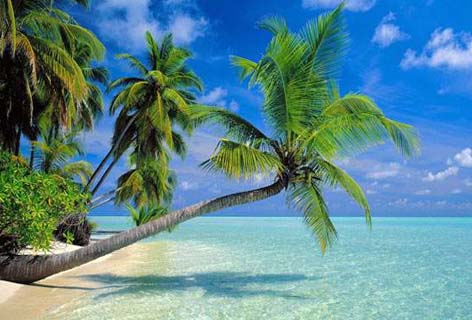
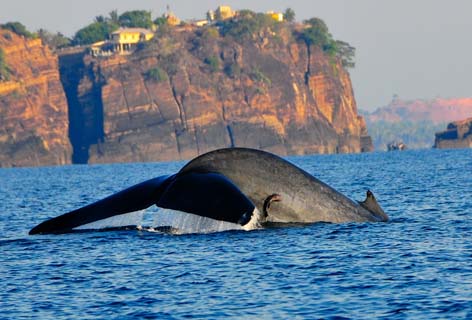
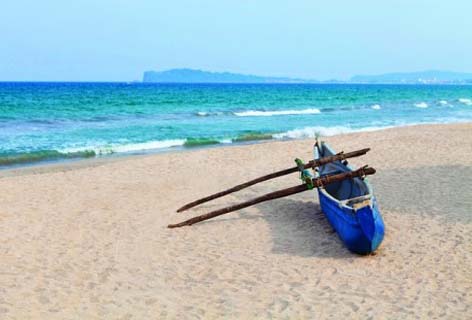
Described by some as the finest beach on the East-coast this 15 kilometer stretch of beach extends from Uppuveli which is 5km from Trincomalee to Nilaveli which is 15km away. With crystal clear blue water and white beaches, Nilaveli beach is a very popular destination amongst sun worshipers. Close to Nilaveli is Red Rock Beach – an estuary perch and pinkish colour boulders.
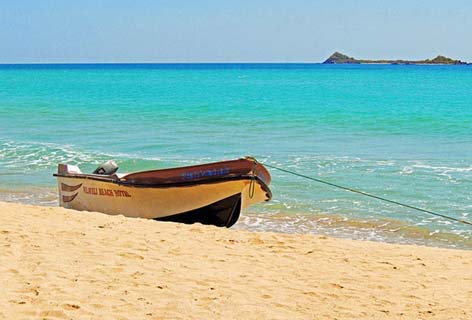
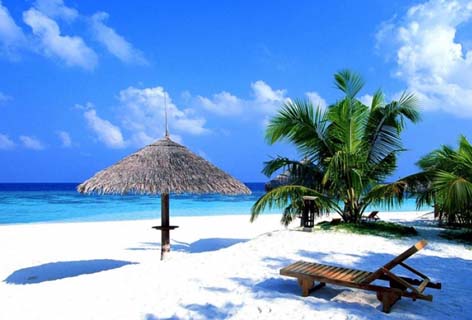
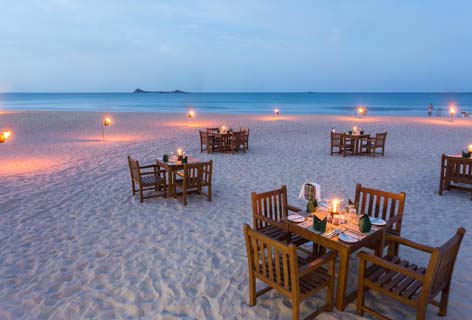
A short boat – ride off the beach and you may visit Pigeon Island which lies 2km off the coast of Nilaveli, great for diving, snorkeling and sea bathing (boat services available).
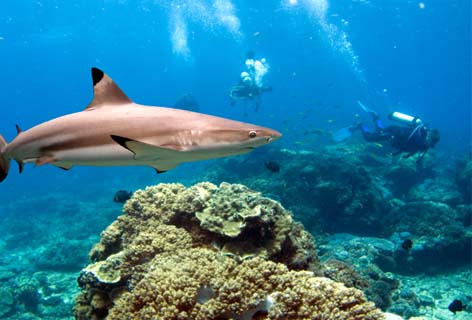
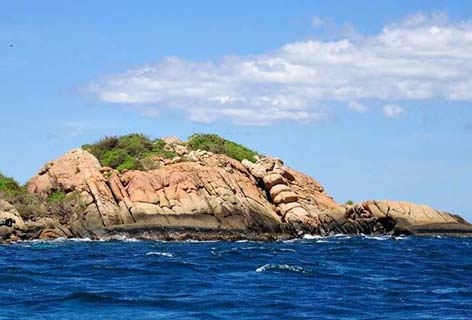
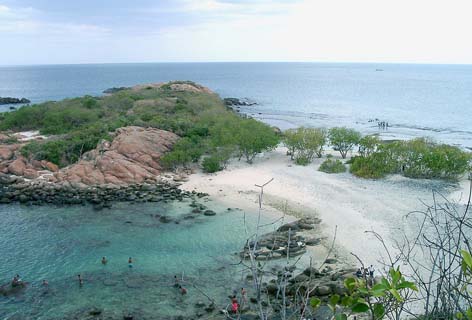
Batticaloa is the market center of the South-East coast, locally known as Batti. Is famous for its ‘singing’ fish and the picturesque lagoon. Batti is often skipped by visitors to venture forth towards the beautiful beaches of Kalkudah and Pasikudah.
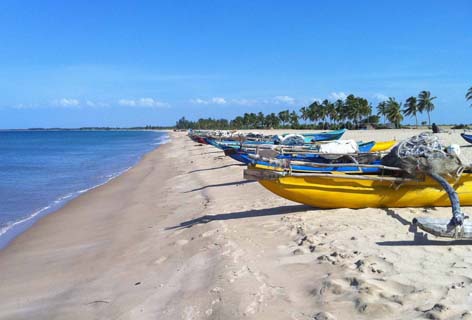
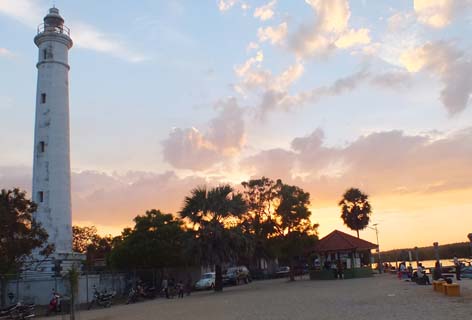
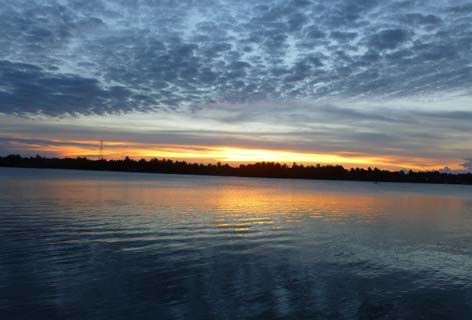
32km from Batticaloa, Kalkudah bay facing east, boasts of clear, calm reef protected sea ideal for bathing.
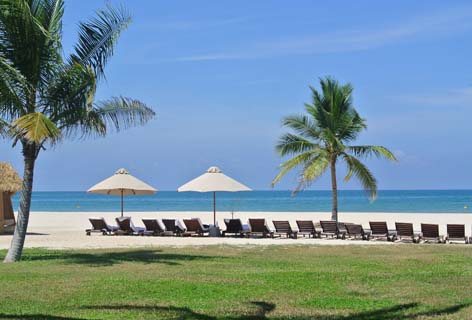
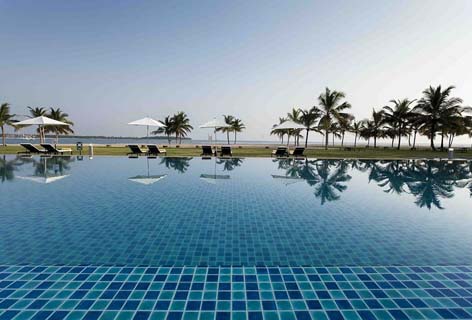
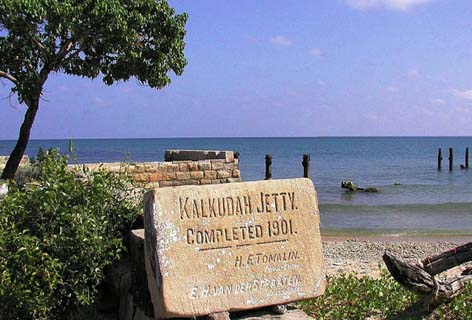
Close by, has a fine bay with clear waters, which opens to the north. An offshore reef shelters a sandy beach and keeps the water, calm and clear. This place is a windsurfers and water skiers delight. Fast developing in to a fine beach resort.
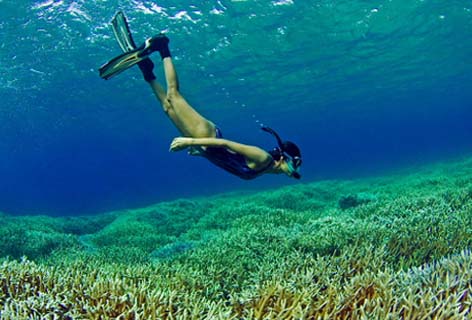

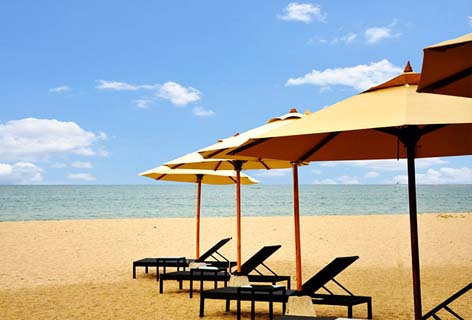
Argam Bay is the southernmost beach resort of the eastern coast. It is a very popular surfing center ranked 3rd among the best 20 beaches of the world by the British Surfers Association. It is situated in close proximity to Lahugala National Park – famous for elephants, Pottuvil Lagoon – a bird watchers paradise and Kumana Bird Sanctuary. Arugam Bay has once again turned into the surfing hotspot that it was and features many international surfing competitions annually.
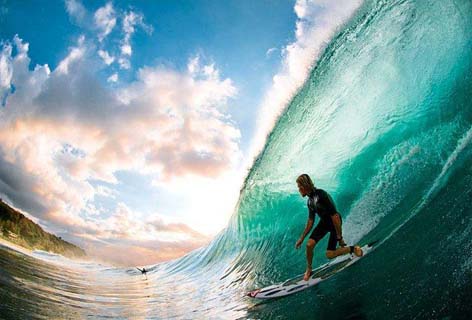
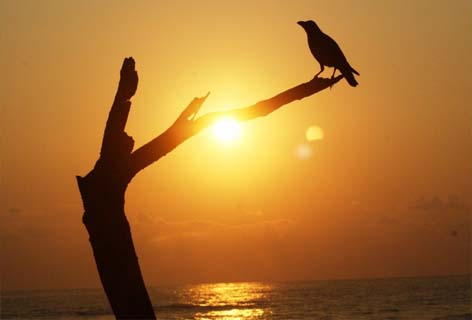
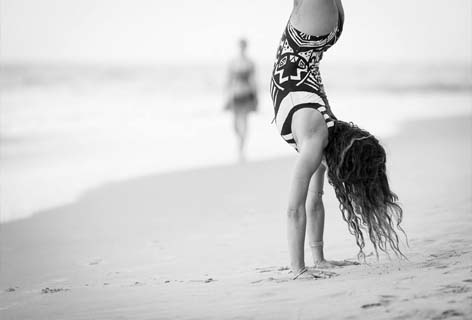
Ratnapura – The City of Gems
Ratnapura is a major city in Sri Lanka. It is the capital city of Sabaragamuwa Province, as well as the Ratnapura District, and is a traditional centre for the Sri Lankan gem trade. It is located on the Kalu Ganga (Black River) in south-central Sri Lanka, some 101 km southeast of the country’s main commercial city, Colombo.
Sri Lanka has had a sparkling reputation for highly treasured gems. Sri Lanka’s mineral rich soils have been yielding apparently a never ending supply of high quality precious and semi-precious gem stones such as Sapphires, Star Sapphire, Rubies, Star Rubies, Alexandrites, Cat’s eyes, Garnets, Zircons, Tourmalines and Spinels.
The gem industry in Sri Lanka is of great antiquity. Marco Polo wrote of his visit to Sri Lanka in 1292: “I want you to understand that the island of Ceylon is, for its size, the finest island in the world, and from its streams comes rubies, sapphires, topazes, amethyst and garnet.” Little has changed since Marco Polo’s time except that Sri Lanka is a modernized country and facing overpopulation and somewhat uncertain economy.
The Blue Sapphire is Sri Lanka’s Gem Supreme and the finest in the world with the best quality what ex-perts called as ‘cornflower blue’ or a royal blue tint. The highly priced of all gems, the Blue Sapphire is second only to the diamond in hardness. The largest known Sapphires in the world weighs a whopping 1404.49 carats was found from Sri Lanka. The Blue Giant of the Orient, weighing nearly 500 carats and the Blue Belle of Asia, weighing 400 carat which purchased by a British millionaire was also from Sri Lanka. A perfect corn flower blue 92 carat specimen is now on display at the State Gem Corporation. The world jewelry market demands Blue Sapphires of 5-15 carats and Sri Lanka has an endless supply.

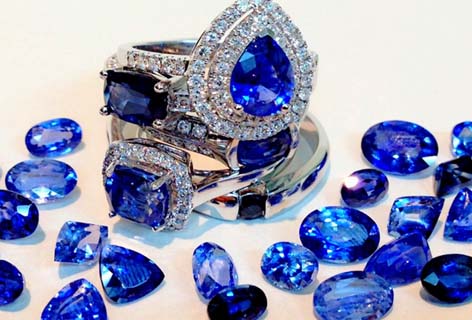
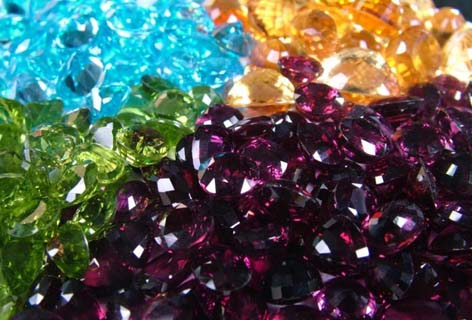
Colombo
COSMOPOLITAN CITY Ever since it was discovered by Portuguese sailors back in 1505. Colombo has grown in popularity as a must visit destination that offers visitors a gamut of attractions from the plush and glamorous to the regular and routine. Cosmopolitan Colombo represents the perfect mix of commercial hype with shops galore, top-notch entertainment and blissful relaxation options, bringing the best of the East and West to travelers and residents alike. From its towering skyscrapers in the old colonial Fort to contemporary villas and geometrically shaped apartment structures, the city has it all.
For the incessant shopper, Colombo presents an array of possibilities with many high-end department stores, malls and elite shopping outlets offering everything from handmade batik silk sarees to the latest smartphones.
For the weary traveler, this magnificent port city and commercial capital of Sri Lanka is the ultimate place in which rejuvenate and relax with tropical, herbal and sensual spa experiences that delight the senses.
For a famous tea-producing and largely tea-drinking nation, the commercial capital’s coffee culture has evolved in recent years. Which perhaps is why global brands such as Barista, The Coffee Bean & Tea Leaf and Gloria Jean’s Coffees are taking a collective omnipresence in and around the city.
Nightlife is a glamorous and rocking affair in Colombo, where locals and tourists patronize the city’s many clubs, pubs, bars, and casinos for a game of roulette, a night of dancing or a few rounds of cocktails.
Going green, lean and clean has become popular in Colombo in recent times with the emergence of beautifully landscaped parks, jogging tracks, cycling lanes and walkways laid out throughout the city.
Colombo is transforming itself into an exciting, bustling and experiential city by the day. Whether you are here on holiday, for business or a prolonged stay, there’s always something brewing for visitors to this metropolis by the sea.
Must See in Colombo
- Beira Lake
- Galle Face Green
- Dehiwala Zoo
- BMICH
- Dutch Museum
- Independent Square
- National Museum
- Lotus Pond Theatre
- Mount Lavinia Hotel
- Planetarium
- Night Bazaar
